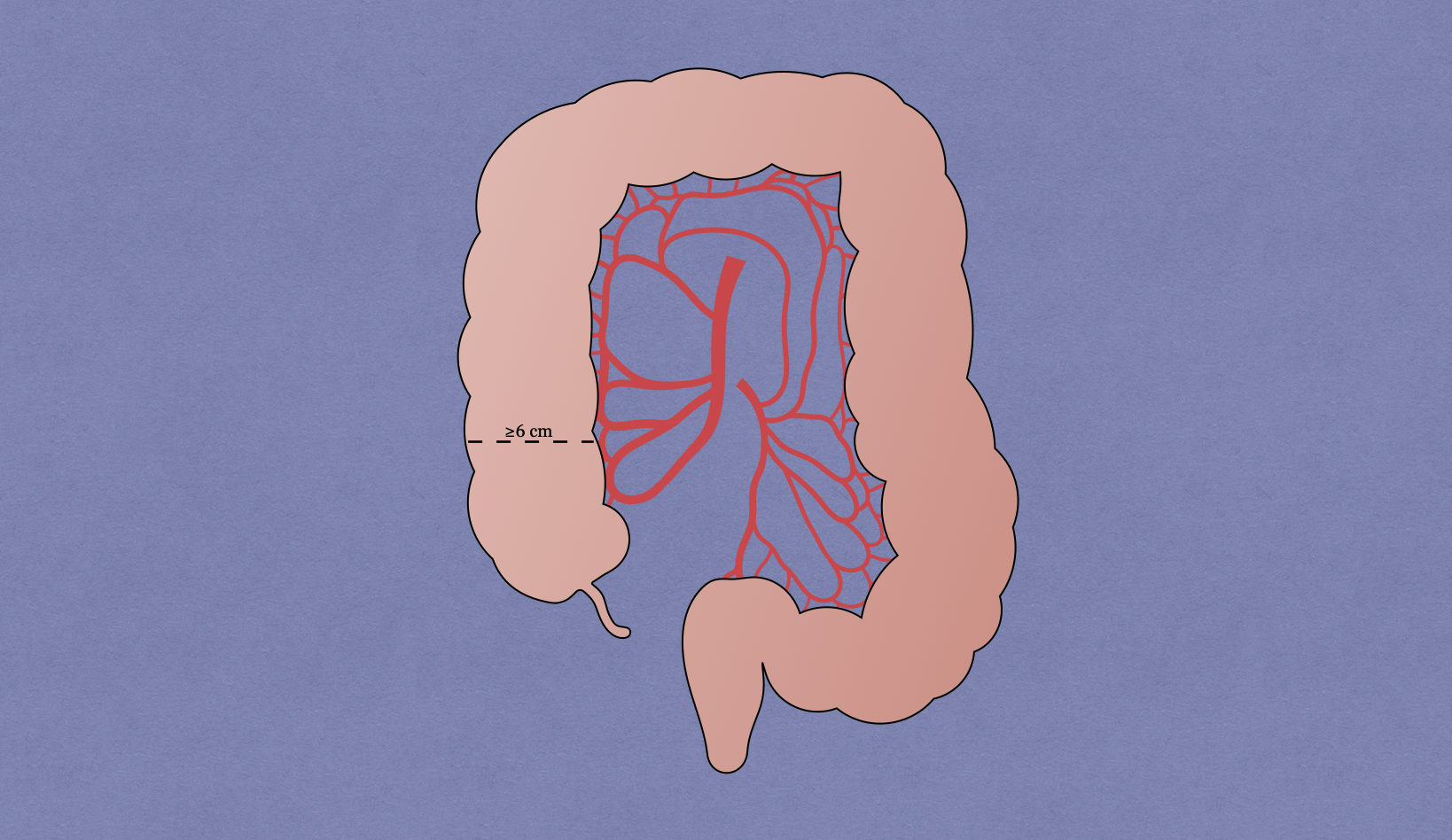Toxic megacolon occurs as acute colitis with dilation of the colon (≥6 cm) with a nonobstructive segmental or complete dilation pattern on imaging with signs of systemic toxicity.
Etiology
- Inflammatory bowel disease
- Clostridium difficile colitis
- Infectious colitides: S. typhi, Shigella, C. jejuni, Y. enterocolitica, E. histolytica, Cryptosporidium, Cytomegalovirus
- Ischemia
- Chronic obstructive pulmonary disease
- Diabetes
- Immunosuppression
- Kidney failure
- Cystic fibrosis
- Chemotherapeutic drugs
- Kaposi sarcoma
- Colonoscopic overdistention
Pathogenesis
- Interleukins and nitric oxide are thought to have contributing roles
- Nitric oxide is increased when inflammation is present. It inhibits smooth muscle tone and contributes to colonic dysmotility and toxic dilation by causing smooth muscle relaxation which results in dilation.
Presentation
- Fever, tachycardia, leukocytosis
- Abdominal distention with tenderness, tympany
- Bloody diarrhea
Diagnosis
- Diagnosis is based on clinical criteria which involves three parts (known as Jalan’s criteria)
- Radiologic evidence of dilation (colon dilation >6 cm)
- ≥3 of the following
- Fever >38ºC/101.5ºF
- HR >120/min
- WBC >10.5 x 106/L
- Hemoglobin and hematocrit <60% normal
- ≥1 of the following
- Dehydration
- Altered consciousness
- Electrolyte disturbances
- Hypotension
Treatment
- Medical therapy
- Serial examinations
- Flat and upright KUB can track progression of colonic distention
- Foley placement to monitor I&O
- Bowel rest, NPO
- NG tube is NOT indicated as it will not decompress the colon
- Correction of electrolyte abnormalities
- Antibiotics for infectious etiologies
- Stress steroids if patient has had steroids recently
- DVT and GI prophylaxis are recommended
- Consider endoscopy to evaluate for pseudomembranes, obtain biopsies, and decompress the colon may be indicated in patients with ileus-limited lower endoscopy. If performed, a small bore colonic tube can be placed and flushed with saline every 6-8 hours to try to maintain patency.
- Positional therapy: knee-elbow or prone for a few minutes every 2-3 hours
- Severe/fulminant ulcerative colitis
- IV corticosteroids with daily dose equivalent of 300 mg for hydrocortisone or 60 mg for methylprednisolone for period of 7-10 days
- IV infliximab or cyclosporine
- Surgery
- Indications
- Absolute indications
- Diffuse peritonitis
- Pneumoperitoneum
- Uncontrolled sepsis
- Major hemorrhage
- Perforation
- Abdominal compartment syndrome
- Relative indications
- Increasing abdominal pain
- Increasing colonic distention
- Progressive physiologic deterioration
- Lack of objective improvement within 24-72 hours
- Sustained transfusion requirements
- Early surgical intervention should be pursued in patients who are immunocompromised, severely debilitated, malnourished, or have multiple comorbidities
- Absolute indications
- Preoperative planning
- High likelihood of stoma
- Foley catheter insertion
- Decompress colon with rigid or flexible endoscope
- Technique
- Usually is total or subtotal colectomy with end ileostomy creation and possible decompressive rectosigmoid mucous fistula or subcutaneous exteriorization of segment of closed distal bowel
- After abdominal entry, abdomen is explored for possible perforation and contamination control
- Oversew serosal tears
- Multiple methods to decompress
- Indications
Relevant Information
- Ascending and transverse colon are typically more dilated than descending and sigmoid colon
